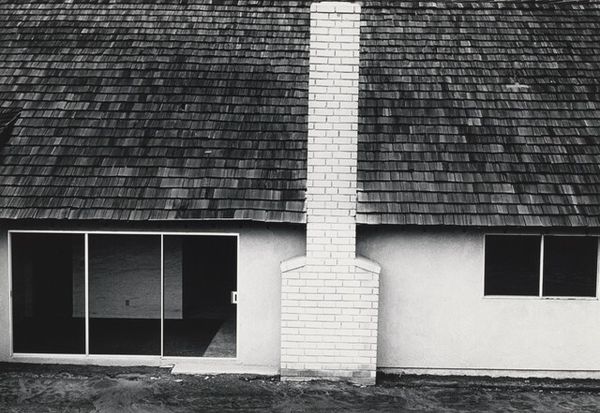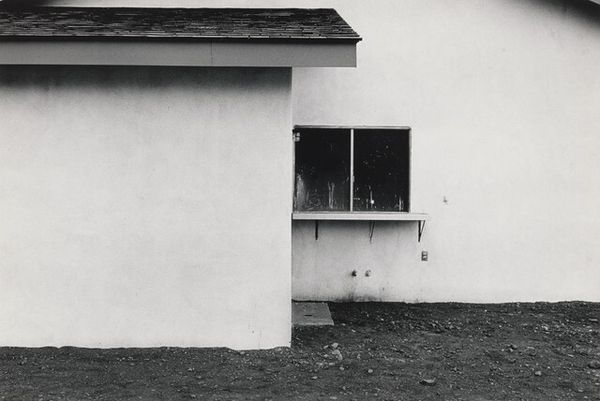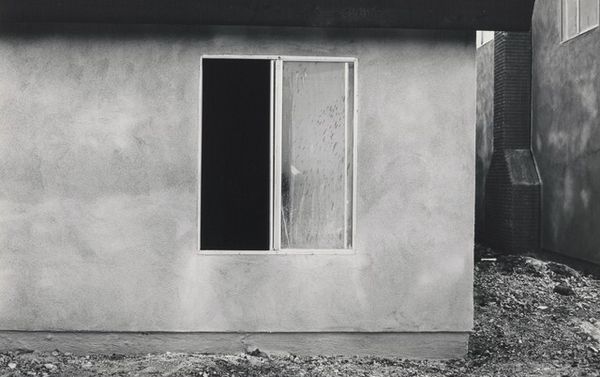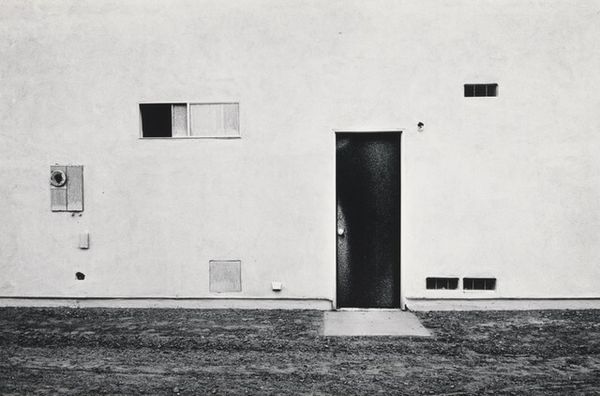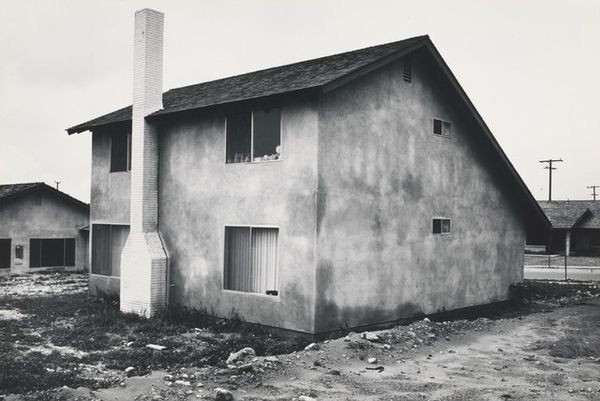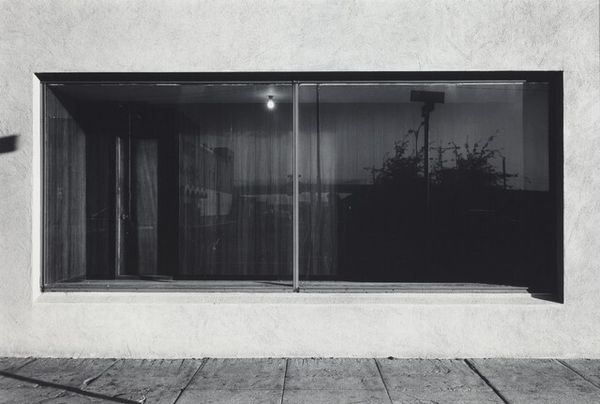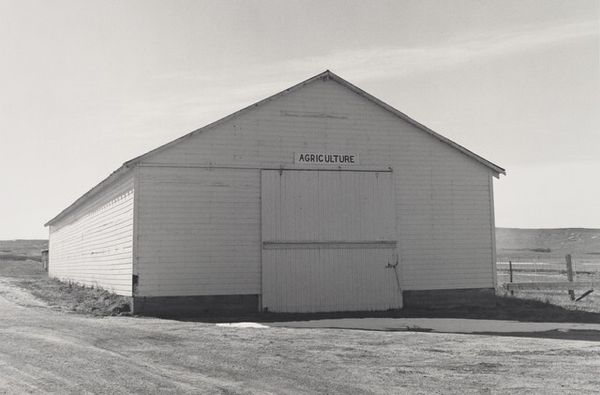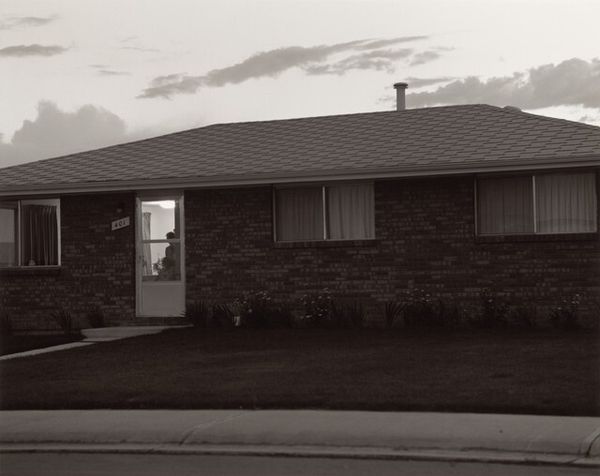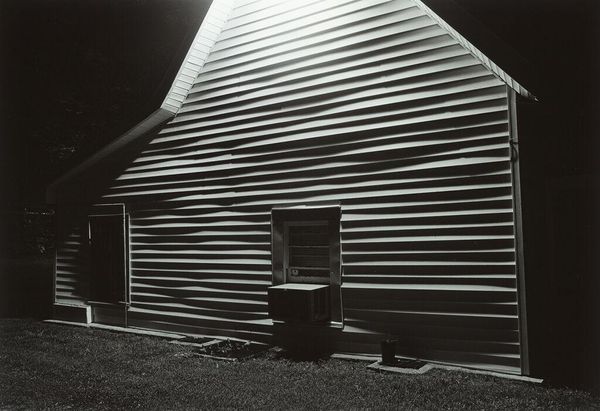
photography
#
conceptual-art
#
black and white photography
#
minimalism
#
sculpture
#
landscape
#
black and white format
#
photography
#
black and white
#
monochrome photography
#
cityscape
#
monochrome
#
monochrome
Dimensions: image: 6 1/16 x 9 3/16 in. (15.4 x 23.3 cm) sheet: 27.9 x 35.6 cm (11 x 14 in.)
Copyright: National Gallery of Art: CC0 1.0
Editor: Here we have John Divola’s "Valley House," a photograph taken in 1972. The monochrome and the plainness of the building give it such a still and quiet feel. What do you see in this piece? Curator: The composition immediately strikes me. Divola has framed a study in contrasts and planes. Consider the interplay between the stark, geometric forms of the house against the soft undulation of the grass and sky. Do you perceive how the rectangular void of the window functions almost as an abstract painting *within* the photograph? Editor: Yes, the window does stand out. It’s so dark and solid compared to the other shapes. Is there a reason why it is so dominant? Curator: Precisely. Observe how Divola orchestrates light and shadow. The textures are remarkably flattened, especially the subtle tonal gradations in the facade, enhancing the photograph’s two-dimensionality. He transforms an ordinary suburban scene into an exercise in visual form. We could look to minimalist sculpture of the time for affinities. Editor: So, it's not about the house itself, but more about the shapes and textures it creates in the photo? Curator: Indeed. The subject serves primarily as a vehicle for formal exploration. The strong horizontals and verticals, the precise balance, and the restrained palette are all essential in our understanding. Consider the picture plane, the perspective. Editor: It’s interesting to consider the house almost as an abstract design rather than a real place. Curator: Exactly. The inherent qualities of form, line, shape, tone—these become the narrative, defying conventional photographic storytelling. That said, you were initially sensitive to a kind of quietude and calm, so it clearly possesses an atmospheric element, however formally constructed. Editor: I see it now. I hadn’t really looked at it that way before! Curator: Paying such close attention to the aesthetic is so vital.
Comments
No comments
Be the first to comment and join the conversation on the ultimate creative platform.
